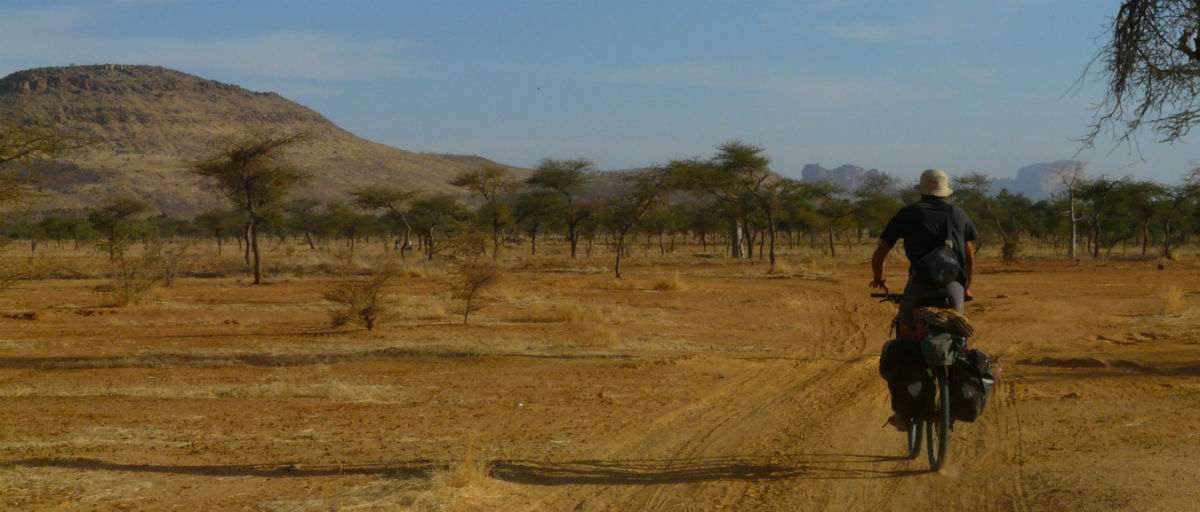
Study examines case of regreening the Sahel and highlights the importance of a social understanding of landscape. Photo: Eduard Garcia/Flickr
Study examines case of regreening the Sahel and highlights the importance of a social understanding of landscape. Photo: Eduard Garcia/Flickr
THE SAHEL: AGRICULTURE AND DROUGHT
A tree paradox in a greener Sahel
Study explores what a greener Sahel means beyond just satellite images – a social-ecological explanation
- Study looks at vegetation changes in three northern Burkina Faso villages using mixed methods
- Drought tolerant species dominates as tree cover returns to the Sahel during period of increasing rainfall
- Highlights the importance of looking at a case from a social and ecological perspectives for a more nuanced understanding of changes
The regreening of the Sahel sounds inheritably positive. Satellite images have shown that vegetation has been increasing in the western Sahel; an area struck by drought in the 1970’s and 80’s. The regreening of the Sahel has been hailed as a natural success. However, understanding how the landscape and people interact provides a higher resolution of the picture in question.
A study co-authored by centre researcher Elin Enfors Kautsky, digs a little bit deeper into what the greener Sahel means, for both the landscape and local populations.
“Understanding how emerging processes potentially interact and shape new types of landscapes in the Sahel is of crucial importance for local populations, who remain among the world’s poorest,” says Enfors-Kautsky.
Tree cover density and composition
Previous studies have attributed the Sahel’s regreening to increased rainfall and land management strategies, respectively. However, few studies have considered links between changes in the natural landscape and human interventions.
To understand if reported vegetation changes are shaping new social-ecological interactions, Enfors-Kautsky and co-authors examine the relationship between changes in tree cover density and composition. Studying three villages in northern Burkina Faso, Enfors-Kautsky and co-authors:
“Report on changes in tree cover and tree species composition, using a number of methods: tree density change detection using aerial photos and satellite images, a tree species inventory, and interviews documenting local farmers’ knowledge about woody vegetation changes.”
Consistent with previous studies, Enfors-Kautsky and coauthors find that tree cover first decreased between the 1960s and 1980s and then increased from the 1980s until the present day in all three villages.
However, this study also shows that the species composition has changed from what it was prior to the drought. Despite recorded increased rainfall in the region after the drought, more drought-resistant, exotic tree species, such as the Neem tree are on the rise. An increase in shrub species has also occurred.
Exotic species, exotic explanations
The paradoxical rise of drought-tolerant tree species coinciding with increased rainfall highlights the complexity of landscape changes. The authors explore the potential human dimensions behind this unexpected shift in species composition.
Based on the local knowledge from interviews with farmers, Enfors Kautsky and co-authors highlight five possible social drivers that could contribute to this vegetation shift:
- Intensified land use from population rise
- Increased livestock rearing in villages
- Preferential use of the fast growing, multi-purpose Neem tree
- 1970-80s tree planting campaigns promoting the Neem tree
- Social memory of the drought crisis has primed farmers to be more conservative in their planting strategy
While it is impossible to know exactly which driver, or combination of drivers, led to this shift in vegetation composition, local knowledge adds a new layer to this otherwise paradoxical reality.
Lack of integration
The emergence of this complex new landscape trajectory only appeared through looking at this case from multiple angles. In referring to the initial partial understanding of the regreening of the Sahel, Enfors Kautsky emphasizes:
“Part of the problem stems from a lack of integration between different scientific disciplines studying different trends of vegetation change. This underscores the need to investigate patterns and processes of Sahelian vegetation change, from local to regional scales, in more detail and in more integrated ways. Also to look at what ongoing change processes mean for local livelihoods.”
Methodology
Enfors-Kautsky and coauthors used a combination of three different methods to complete this study:
- Remote sensing, using historical satellite images and aerial photos from 1968 to 1984, whereas more recent imagery came from Google Earth Pro.
- Woody species inventories and size class distribution analysis (SCD) of trees. An inventory and stratified sampling of tree species, size, and regeneration was taken at two locations. SCD analysis was used here to determine if woody species composition changed over time.
- Interviews with local villagers about trends in woody species vegetation help to explain the changes in woody species composition.
Hänke, H., Börjeson, L., Hylander, K. and Enfors Kautsky, E., 2016. Drought tolerant species dominate as rainfall and tree cover returns in the West African Sahel. Land Use Policy, 59, 111-120.
Elin Enfors-Kautsky is a researcher at the Stockholm Resilience Centre. Her work focuses on transformational change, with a particular focus on agricultural systems and ecosystem services.







